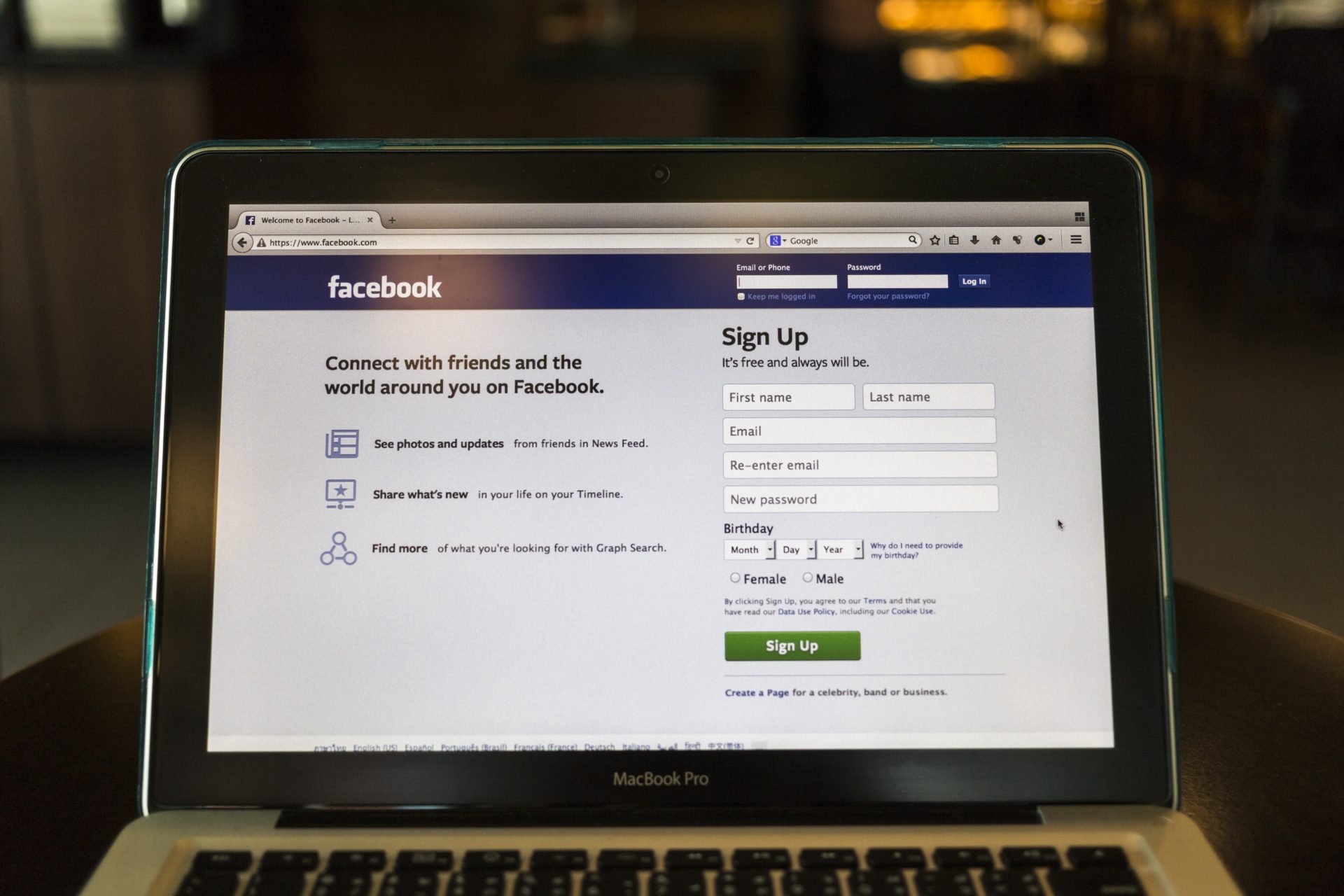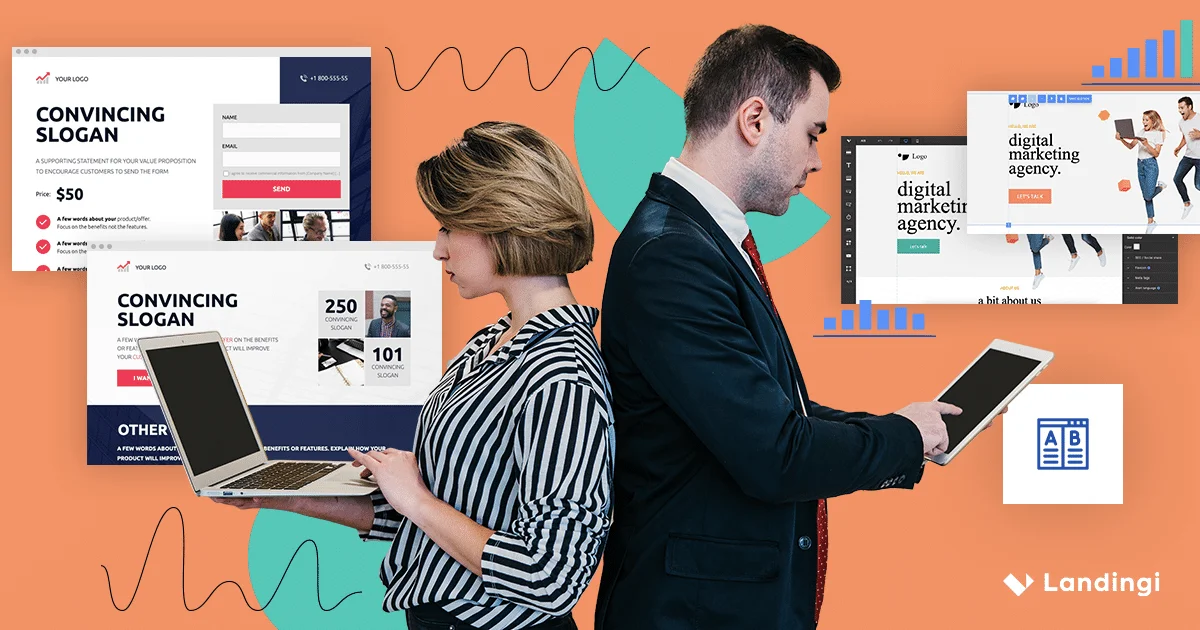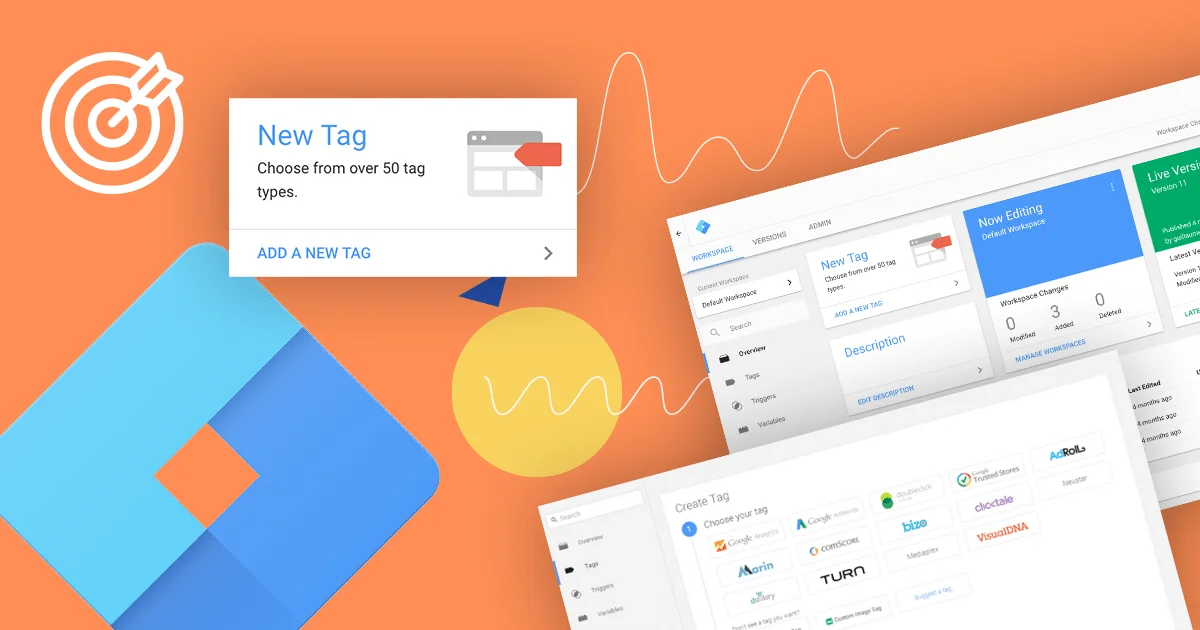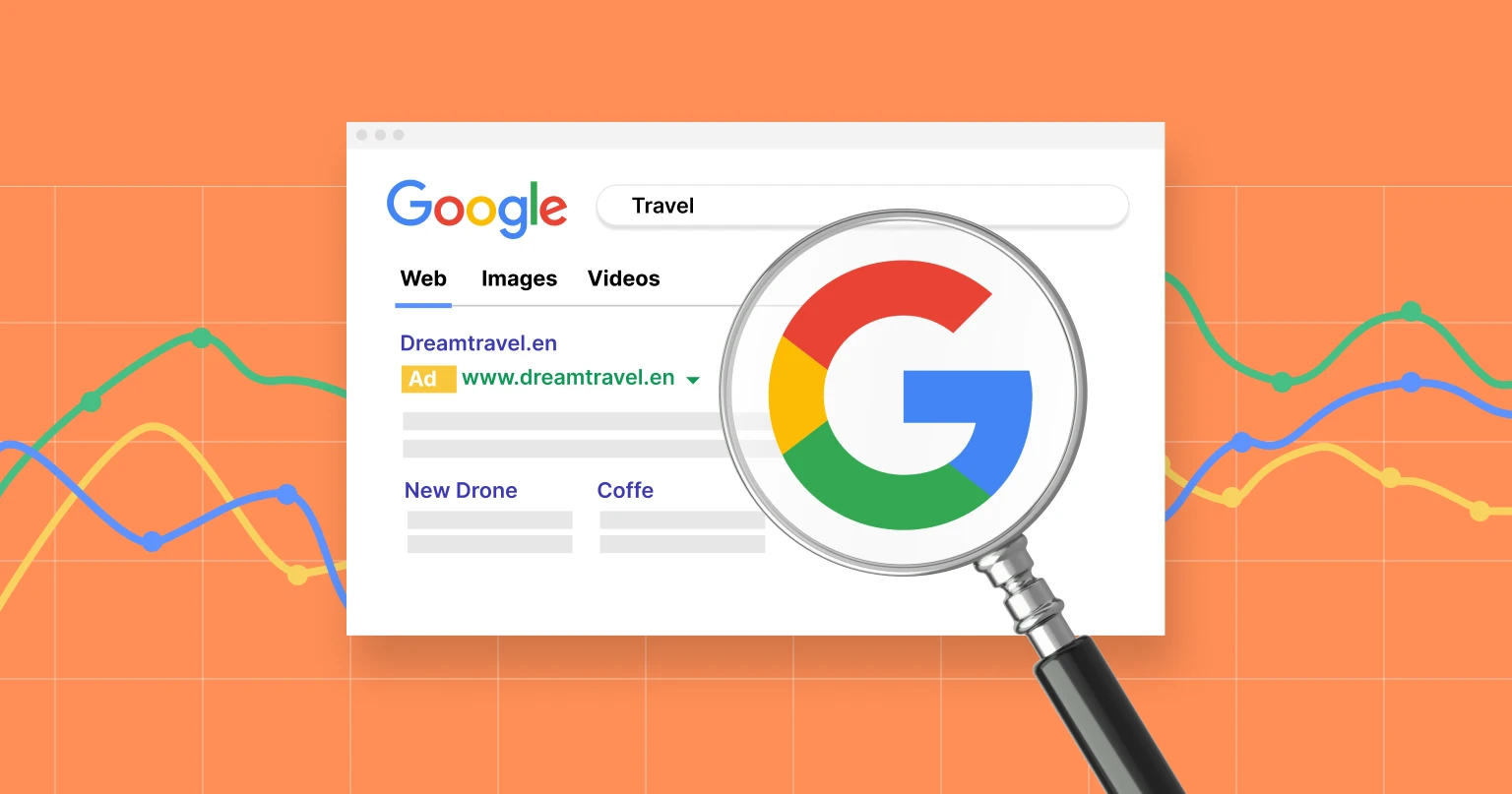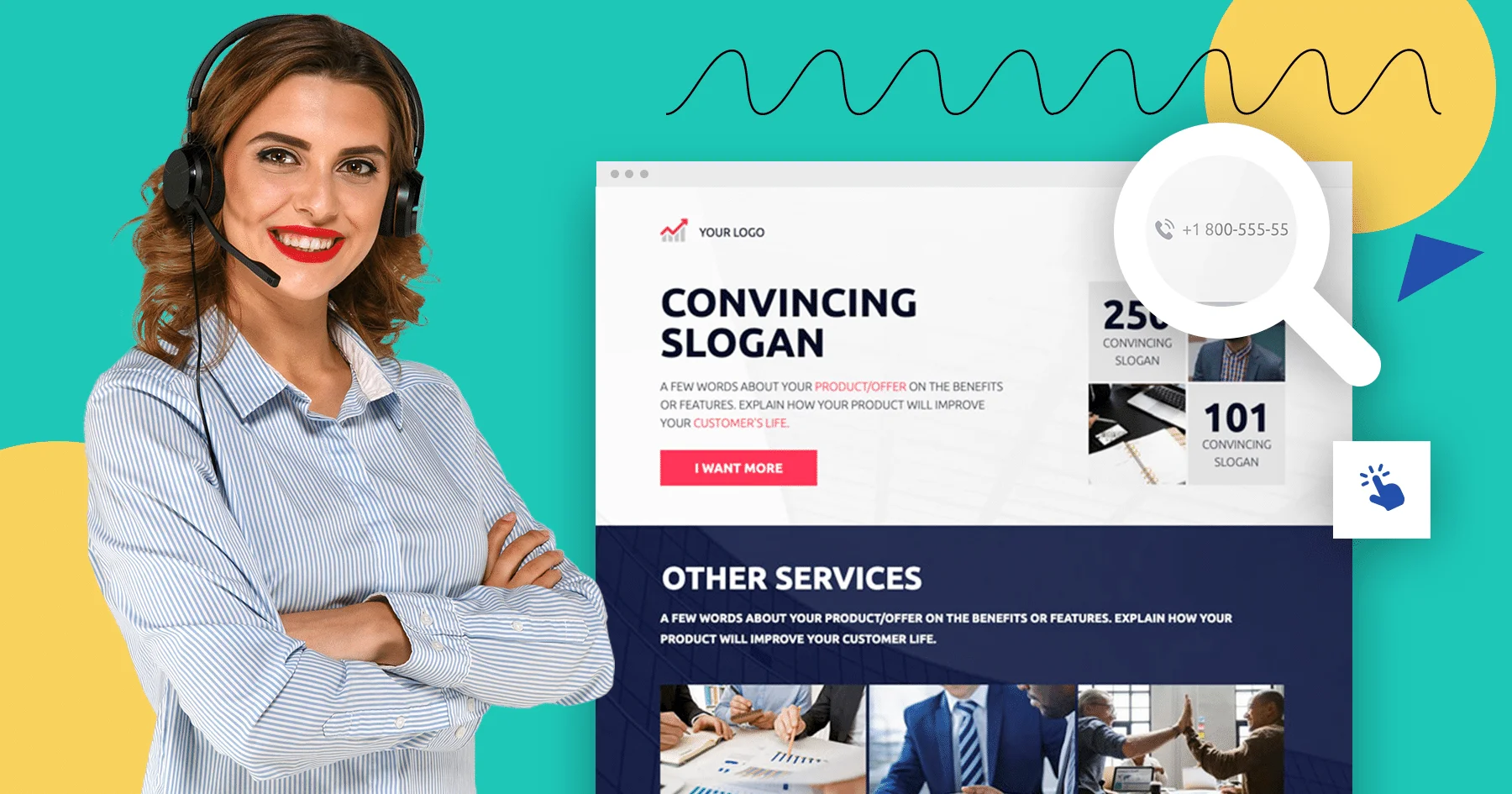Facebook is a competitive marketing channel. As competition increases the cost for ads rises. This makes mistakes more expensive. For many businesses it can feel hopeless, yet there are opportunities for connecting to customers and building your business through Facebook – you just need the right strategy…
In this guide I will show you what a well designed Facebook Funnel looks like. The funnel I’ll share with you today combines your Facebook Page, Facebook Ads, Facebook Messenger, and landing pages. Here’s what we’ll cover in the next few paragraphs:
It looks quite complex, but I’ll break things down into nice bite sized chunks so it’s easy to digest. We can start at the very beginning with a quick overview that covers how to set your marketing goals.
Make your sections smartable and let go of mundane manual tasks with Smart Sections! An easy way to manage bulk changes.
Step 1: How to Set Your Facebook Funnel Goals
Facebook funnels are not a new concept. You’ll find plenty of experienced marketers who have been designing sales funnels who use Facebook for years. The basic principle behind successful Facebook Ads campaign is that the profit you make from selling a product or service pays for the ads.
Over time you can use this momentum to scale your campaign.
The way that you define that success will vary according to your ultimate goals. For some businesses the aim will be directly selling a product or a service. The Return on Investment (ROI) for this model is pretty easy to track. For other businesses the ultimate goal of the Facebook marketing funnel would be growing a Facebook Messenger list, or just your email list. If you’re using this model success is usually defined by the Lifetime Value (LTV) of a customer.
The goals that you choose will determine the type of funnel you create. For example, if you just wanted to generate an email list then the Facebook funnel you create would look very different to a funnel for growing your Messenger list.
Below is a quick overview of three different funnels based on different campaign goals:

Of course there are a lot more marketing funnels that the three listed above. For example, you could run a Facebook ads campaign that sends your audience to a webinar. I’ve covered how to do this before.
In this article I’ll be focusing on a Facebook Marketing funnel that results in the sale of a product, and gets people signed up to your Facebook Messenger list. The reason I chose this funnel is that it’s less used than a regular Facebook sales funnel campaign.
You can easily adapt the tips that I’m sharing to the other funnels listed in the article (I’ll also be providing some tips for the other funnels as well).
For e-commerce stores the starting point of a Facebook funnel is the identification of a cheap product with a large demand that can be supplied by drop shipping. When I say cheap I mean under $30. This is a price point where most people don’t think too much before buying a product. Common verticals where this strategy work well include:
- Health and beauty products
- Fitness products like protein shake, and similar
- Unusual household goods with a large demand
Essentially the easiest products to sell are those that you’d expect to see on something like the Shopping Channel. Of course the product you are selling doesn’t need to be cheap, and the vertical you are focusing on does not need to be e-commerce…
Step 2: Optimise Your Facebook Page
The starting point for a funnel that incorporates Facebook Messenger is your business page. There’s a good chance that if you’re reading this article you already have a Facebook page. For your campaign to convert you want your facebook page to have signs of life.
Just compare these two posts from the Body Coach to see what I mean.
The post on the left has thousands of views, reactions, and comments. The one on the right, which has been edited, has 5 views. Even though the content is exactly the same, people are far more likely to interact with the content on the left.

The best way to create this type of engagement is to research what works for competitors in your niche, and then create similar content. You can then boost posts that got a good engagement with Facebook Ads to increase the level of interest.
Fortunately you can use the social media platform itself to do your research. Finding popular Facebook pages in your niche is easy. All you need do is follow these simple steps:
- Head to Facebook and type a relevant word or term into the search box at the top of the page, e.g. you might want to type ‘sportswear’ if that’s your niche.
- Select the ‘Pages’ tab from the options along the top of the page.
- Select ‘Local Business or Place’ on the left-hand side, if you want to limit results to pages from nearby companies.
- You’ll then have a list of Facebook pages run by companies similar to your own.
You can see how popular each page is, by the number of likes it has.
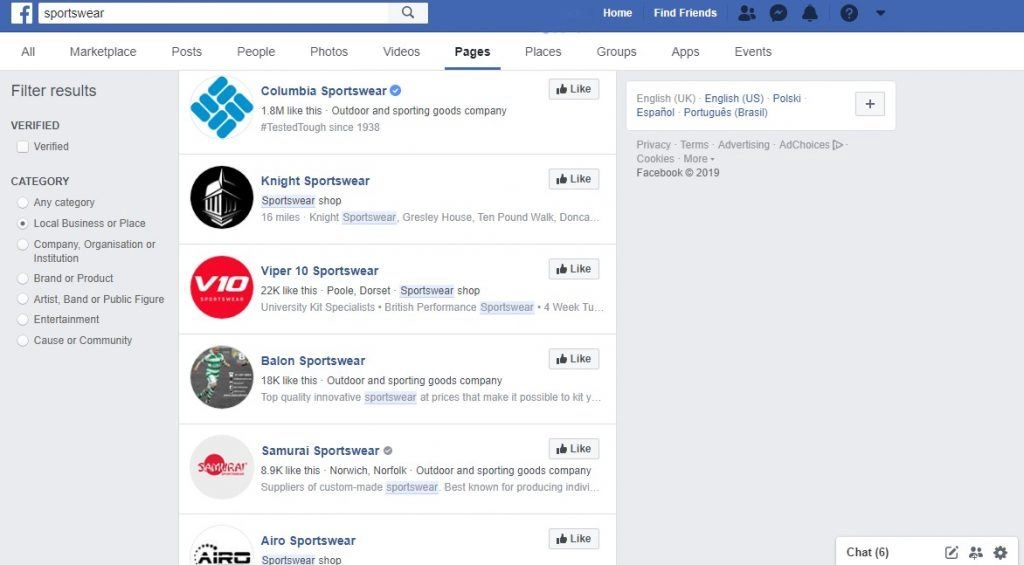
Clicking into a popular page will let you see the kind of content they post and how often. It will also show you how they interact with their followers. All of this will give you pointers on how to operate your own page, the type of content people interact with, and the copy and visuals that engage them.
You can then take these learnings and apply them to your own page.
The next part of the Facebook funnel is attracting people to your page through an Pay Per Click (PPC) campaign. If you’re not planning to incorporate Facebook Messenger into your funnel you can just skip this step – though to be fair, having an engaged Facebook page will generally benefit your business, so don’t ignore it completely.
Step 3: Craft the Copy for Your Ad
Like SEO, it can feel like PPC is a dark art that’s almost impossible to master. While it’s true that PPC is complex, and there’s a definite learning curve, the foundations of a PPC campaign are the same whether you’re running spending money on Google Ads, Facebook, or any other channel. These are:
- The copy and the creative for the ad
- Audience you are targeting
- Website experience on the page you are sending them to
It might help if you think of these three things as levers that you can adjust. By playing around with these levers you will hopefully improve your results. This is generally referred to with a monetary value either as a Cost Per Click (CPC) or a Cost Per Acquisition (CPA).
You can see what I mean when I talk about the three levers below.

Assuming you are planning to use this ad to grow your Facebook Messenger list, you’ll be initially sending leads to your Facebook page. These leads will then go to a landing page. So the website experience for this funnel, which you want to optimise, is broken down in two steps.
In terms of copy, most of the standard marketing principles apply when writing for Facebook Ads. You need to think about who you’re talking to and what problem they have. This comes from an understanding of your audience.
Your ad should have a hook that refers to how you’re going to solve that problem.
Keep in mind that your ad will appear on a busy news feed. The copy and visuals need to engage your target audience and get them to take an action. A slab of boring text won’t cut it.
You need to break things up.
This means designing interesting graphics, and crafting clever copy. One thing you can and should experiment with in your copy are emojis. People love emojis, even if they pretend not to.
A good example of a company that regularly use emoticons in their copy are AppSumo.

The consultant who creates the Facebook ads for Appsumo explains why they take this approach:
“You need to create scroll stopping ads to succeed on Facebook. Something that will hook someone’s attention in the first 3 seconds and make them click” – Jack Paxton, Founder Top Growth Marketing
You can see how the emoticons used in the copy guide you towards the desired outcome (specifically the pointing fingers). When it comes to the creative element of your ad, you can use images, gifs, cinemagraphs or videos. It can also make things easier to follow a copywriting formula, like AIDA (Attention, Interest, Desire, Action) to structure your copy. You can read more about AIDA model here.
While images are easier to create, video is the best choice. It converts far more readily than a still image, and you can track your audience for retargeting based on engagement (how much of the video they watched).
Below are some general tips you should consider when including a video in a Facebook ad:
- 3:4 or 1:1 ratio will work best across different devices.
- You should loop the video if possible.
- 15, 30 or 60 seconds are the ideal lengths for Facebook ad videos.
- The first three seconds have to capture the attention.
- Always include captions for videos with dialogue or a voiceover.
- Check the holding image that people will see if their autoplay doesn’t work or has been disabled.
To improve the conversion rate you will need to create variants for your ads. I recommend creating a minimum of three sets of visuals, and two versions of copy for each campaign. Creating variance is especially important if you have a large ads budget. In fact, as a rule of thumb the higher your ad budget the more ad variance you’ll need to create.
Facebook automatically run multi variant testing on your ads. Over time Facebook will show the people you are targeting the best performing combination of copy and graphics. This will help reduce your CPC.
The other thing that you want to keep in mind when crafting your copy is who you are targeting. If you’re targeting a cold audience, the copy you use would be very different to the copy for a retargeting audience. A good resource to refer to when considering what kind of messaging you should be using is the five levels of customer awareness by Eugene Schwartz.

I’ll cover different types of audiences in the section below.
Just before I get to that, I’ve got one pro tip for your ads campaign: make sure you are implementing a system called Dark Posts. This means that you keep the engagement, likes, comments, and other factors associated with your ad. While implementing dark posts on Facebook is a bit technical, keeping those engagement signals on your ad will help drive down your customer acquisition costs.
Targeting Your Ads
Once you’ve crafted your ad copy, and got the creatives, what’s left is to make sure that the message reaches the right people at the right time. That’s where the targeting of your ads comes in. With ads there are three categories of audience:
- Remarketing Audience – These are people who have already connected with your business. They might be former customers or people who have engaged with you via email or over social media. This audience is likely to deliver the highest ROI for Facebook ads.
- Look-a-Like Audience – it’s a collection of prospective customers, who Facebook identifies as being similar to your existing customers. You’ll want to develop a look-a-like audience based on the most engaged current customers you have.
- Interest Targeted Audience – This is where you make educated guesses about the interests of your audience. You can use the Facebook audience insights tool to do this.
The people most likely to buy from you, the ones you most want to target, are those who have visited your website in the past. You can be more direct promoting a product with the copy you use in your ads.
You need to adapt your copy slightly for a Facebook ad campaign by targeting a look-a-like audience. Even though they might be your perfect customers, as they have never engaged with your company you need to explain a bit about who you are. As a result, you’ll finally have the interest targeted audience.
The ad copy you use for an interest targeted audience would be different again. You can refer to the graphic on the 5 levels of customer awareness I inserted in the post earlier to see what I mean.
The second thing that you will need to set up for your campaign are objectives. These will range from engagement with an ad through to conversions. It’s important that you set these objectives, and it’s easy to do. AdEspresso has a good guide you can reference about how to do this.
You will want to run conversion campaigns if you are optimizing to a goal like sales/revenue. But, this does not mean engagements are not important. Engagements actually assist your ad to become more scroll stopping and authoritative.
The more likes, shares and comments, the more important or interesting your ad will appear. Learn how to gamify the engagement on your Facebook posts to improve your ad quality.
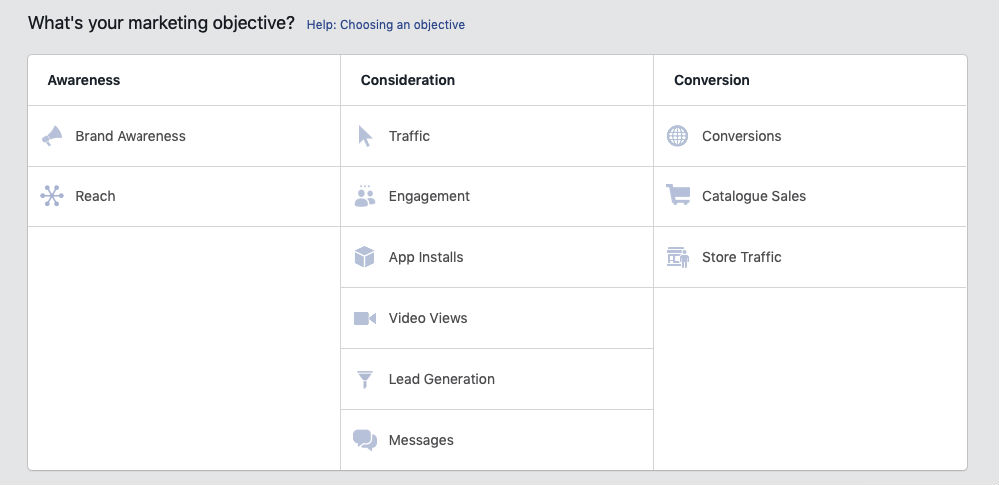
You will need to periodically review your targeting once the ad is live. This is done through ad set level optimisation. When you do this, you essentially remove the demographics that are underperforming, so you can focus on the highest converting demographics.
As you optimise your targeting, you will reduce your cost per click.
Step 4: Grow Your Messenger List
The next stage of your Facebook Funnel will either be sending leads to a landing page, or to your Facebook Page to get them signed up to your Messenger list. As I mentioned earlier, this is kind of like building an email marketing database. Except for the fact that it’s much easier.
You can see quite how significant this opportunity is when you compare average email open rates with Facebook Messenger open rates.
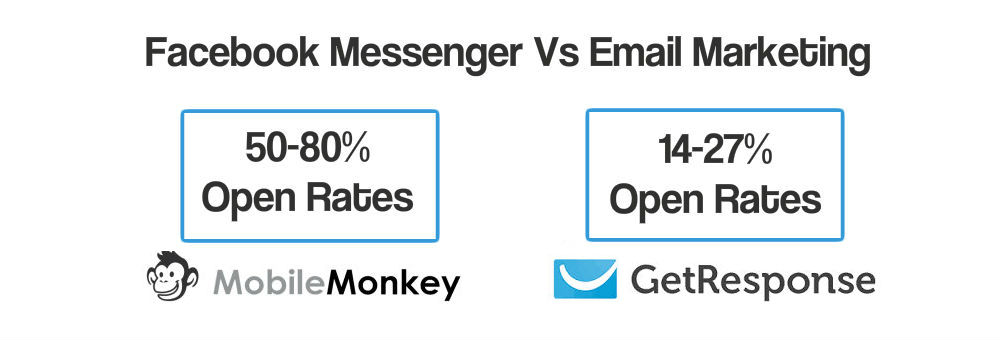
Take these figures with a pinch of salt. These are different marketing channels, and should be used differently. However, the whole situation illustrates that Facebook Messenger has a lot of potential…
If you’re going to incorporate Messenger into your Facebook funnel, you’ll need to sign up to a Facebook Marketing platform. Luckily there are a lot of great Facebook Messenger platforms around. They’re generally all pretty easy to setup, and intuitive to use.
With Facebook Messenger, all a Facebook user has to do to add themselves to your messenger subscriber list is interact with a post on your Facebook page. If they comment on a post or send you a message you’ll have added them to your Facebook Messenger list. You should offer something similar to a content upgrade, or a discount as an incentive to leave a comment. You can see an example below:

The only action that you’re looking for at this stage is to get people signed up to your Messenger list. You can send them promotions, and do other things with your list at a later stage just as you would do with email.
Step 5: Convert Your Lead
You’ve captured the attention of prospective customers with your Facebook ads and got them to interact with your Facebook Page. You’ve used Messenger marketing to direct them to a landing page. At this stage you’ve got two options with your Facebook funnel. You can either:
- Send them directly to a sales page (great for hot leads)
- Push your lead to an advertorial blog post (best for warm or cold leads)
I won’t cover how to create a sales page. You’ll find plenty of great articles on the net about how to do this, and what a good landing page looks like. If you need an inspiration, you can always browse through our landing page templates as well.
Instead, in this last section I’ll cover how to create a blog post style advertorial.
You will want to create your advertorial with a landing page builder, instead of a regular blog post. You don’t want to create unnecessary distractions that lead your audience elsewhere. Here are a few things to keep in mind about the advertorial blog post:
- Relevant to the product you are selling, or services that you are providing
- Your advertorial article length should be somewhere between 400-700 words
- Address the pain points that your customer is experiencing and the solution you are offering
You can see in the example how the user was logically sent from a Facebook Ad to a sales page via an advertorial.
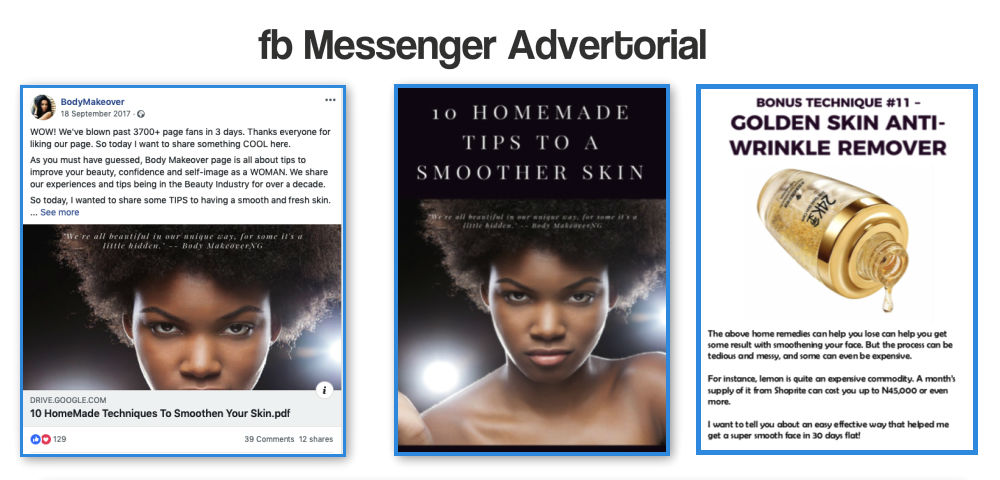
You can experiment with things like opening the article with a video. Alternatively you might want to finish the article with a link to a quiz, which then directs the user to a sales page or optin form.
Adding a quiz to your funnel is effective for a number of reasons:
- Everyone likes quizzes. It generates curiosity and interest
- Quizzes are interactive and gets a lead to take actions. This helps improve the quality of leads
- It improves relevancy. You can provide custom products or address pain points based on user response
There’s a nice case study about how to use online quizzes to generate sales on the Conversion Sciences blog. Again, there are plenty of great quiz software platforms that are built for conversions available for marketers.
Remember to always direct traffic from ads to a corresponding landing page. For example, if you already have a website on WordPress and you wish to keep your brand image consistent, you can enhance the website by publishing WordPress landing pages on your own domain.
Wrapping Things Up
In this guide I’ve shown you how to create Facebook Funnels that you can implement in your business. It’s a complex funnel that combines a number of moving parts and requires an understanding of PPC and copywriting. If you’ve got limited experience with Facebook ads then the tips I shared will put you in a better position to experiment with or scale your paid marketing.
Hopefully with this information you’re now in a better position to create a funnel that fits your company goals; grow your email list, sell a product, grow your Messenger Marketing list, etc. If you have questions about anything covered in this guide to Facebook funnels please let me know in the comments below.

